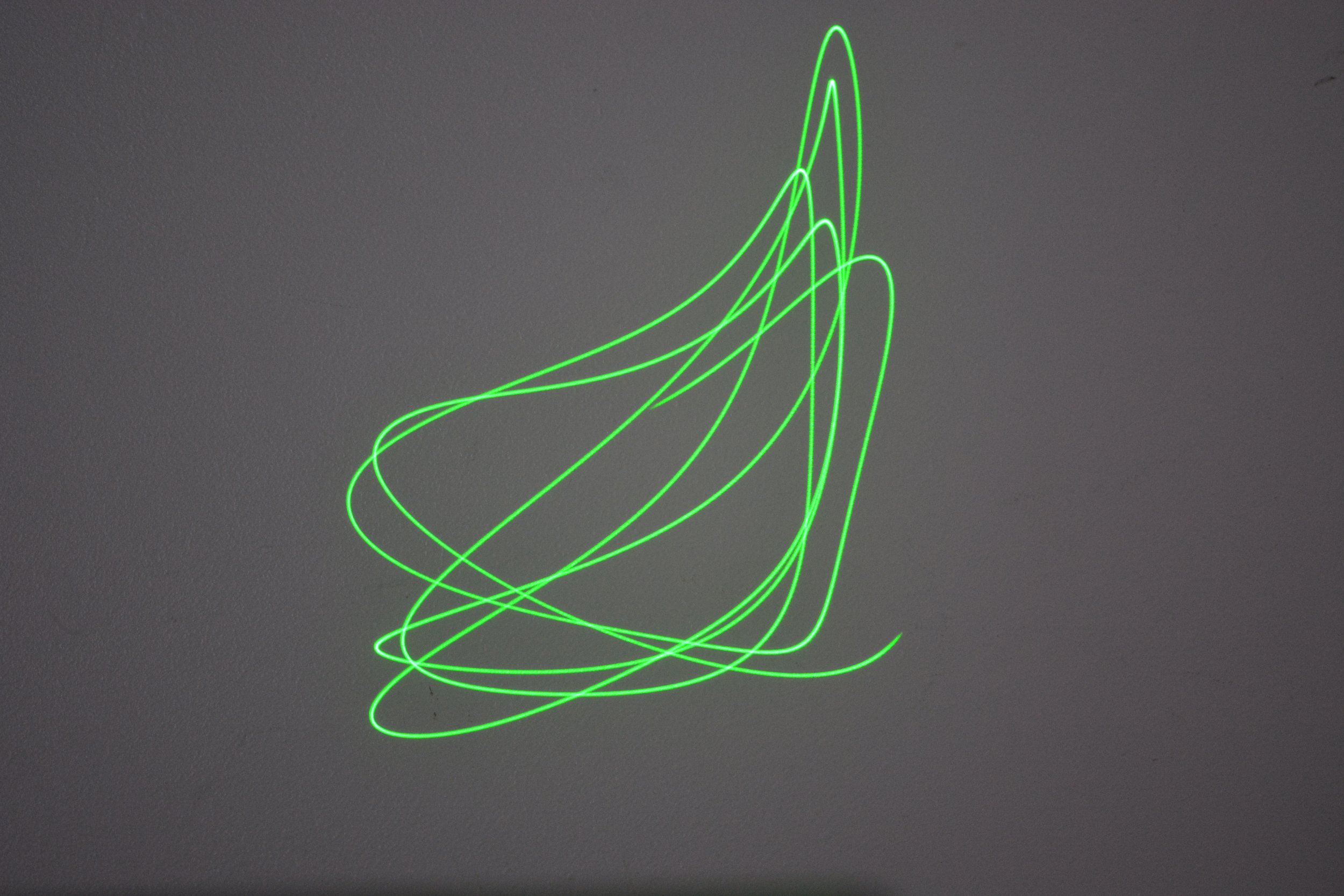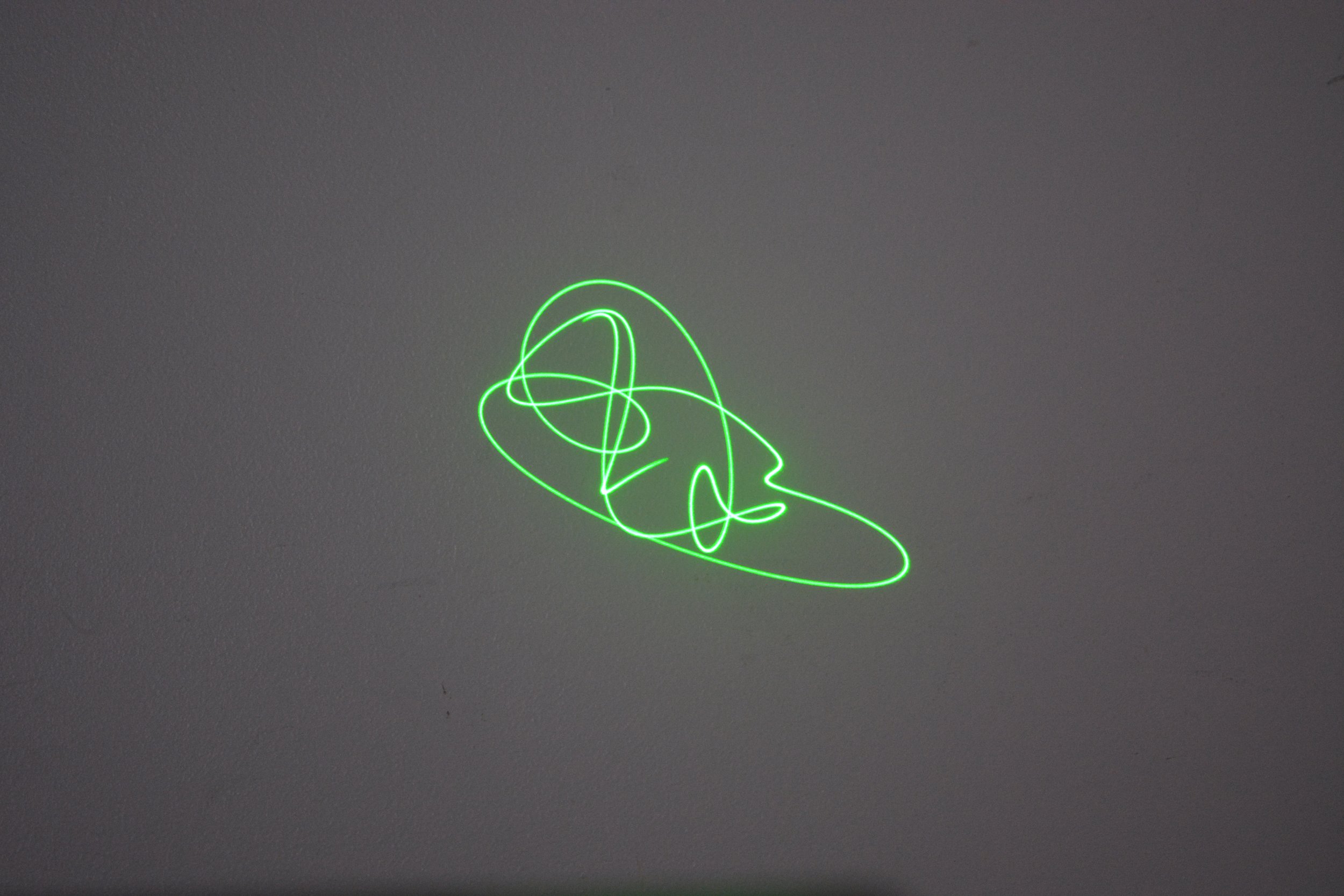week one
oobleck
Oobleck is a non-Newtonian fluid made from cornflour and water*. It is called non-Newtonian since it behaves as a liquid under normal atmospheric pressure but becomes solid when additional pressure is applied. Cornflour has long chain-like molecules surrounded by starch molecules and it does not dissolve in water but forms an emulsion with very special properties.
You can roll this emulsion into a ball in your hand, but as soon as you relax it will return to its liquid state and ooze out between your fingers.
Cornflour has an interesting property that makes it perfect for making smooth custard and sauces. This is because it does not “whet” very readily and typically forms clumps. Cornflour starch is a large chain-like molecule that is tightly wrapped up in starch granules, so it doesn’t dissolve in water, as do salt or sugar.
These large molecules tend to clump together as they are “hydrophobic”, which means they have a tendency to avoid water. This is likely caused by tiny mutually repelling charges on the water and starch molecules.
The well known speaker experiment involves pouring oobleck into a woofer and playing a track with a thumping bassline at medium to high volume. The energy of the sound pressure solidifies the oobleck momentarily and it jumps in and out of its liquid state in response to changes in the sound energy thumping through the speaker.
*https://news.cornell.edu/stories/2015/11/secret-oobleck-revealed-last
**LIN, N. Y. C., NESS, C., CATES, M. E., SUN, J. & COHEN, I. 2016. Tunable shear thickening in suspensions. Proceedings of the National Academy of Sciences, 113, 10774-10778
Blue/green oobleck in a clingfilmed speaker well jumps to the sound of ‘Ceci N’est Pas une Cliché’ (Charlotte Adigery/Bolis Popul 2022)
A sine wave tone generator (https://onlinetonegenerator.com/) creates a continuous tone. Different frequencies create different patterns in the surface of the oobleck. So far I’ve only tried the sine waves.
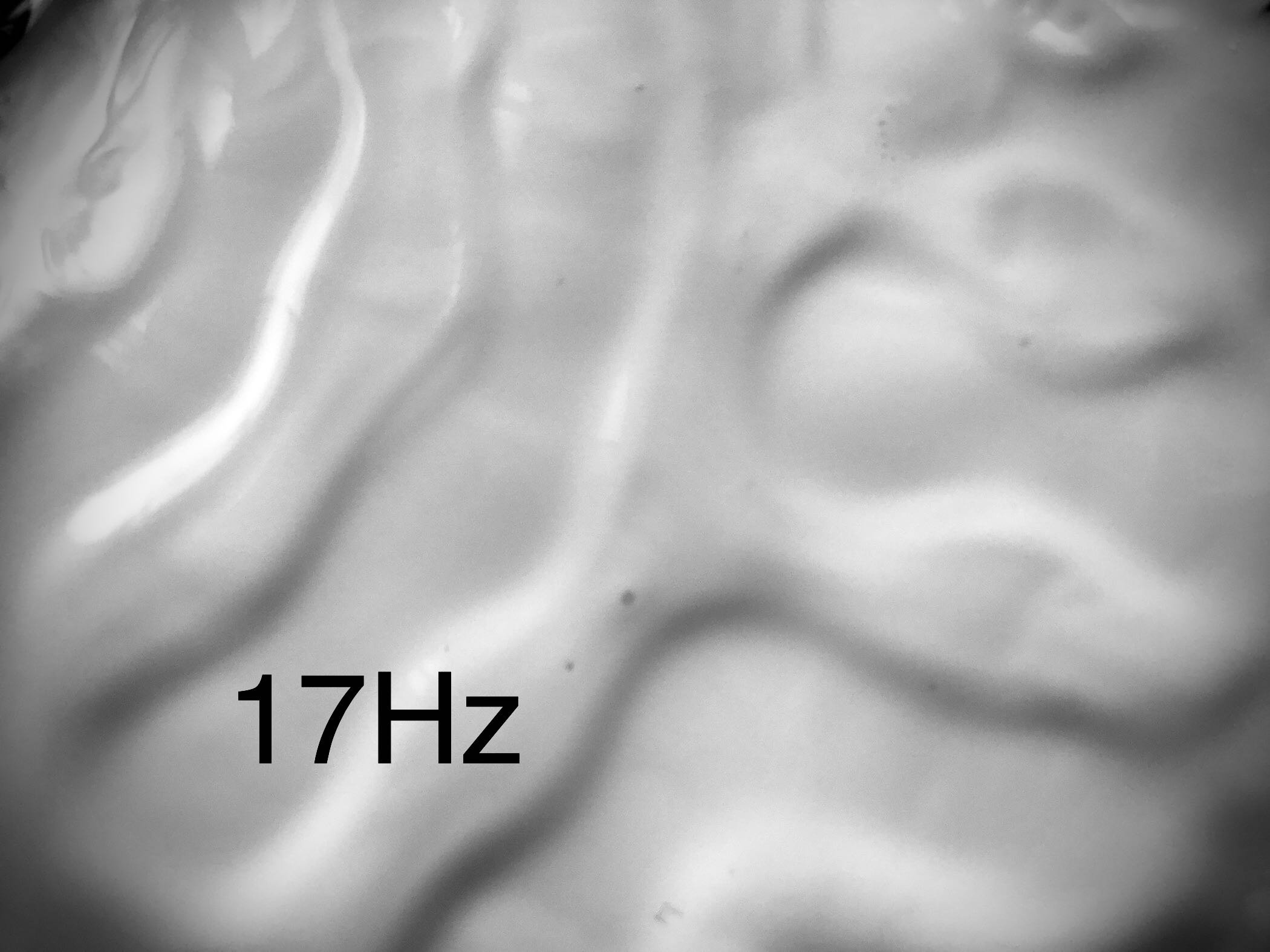
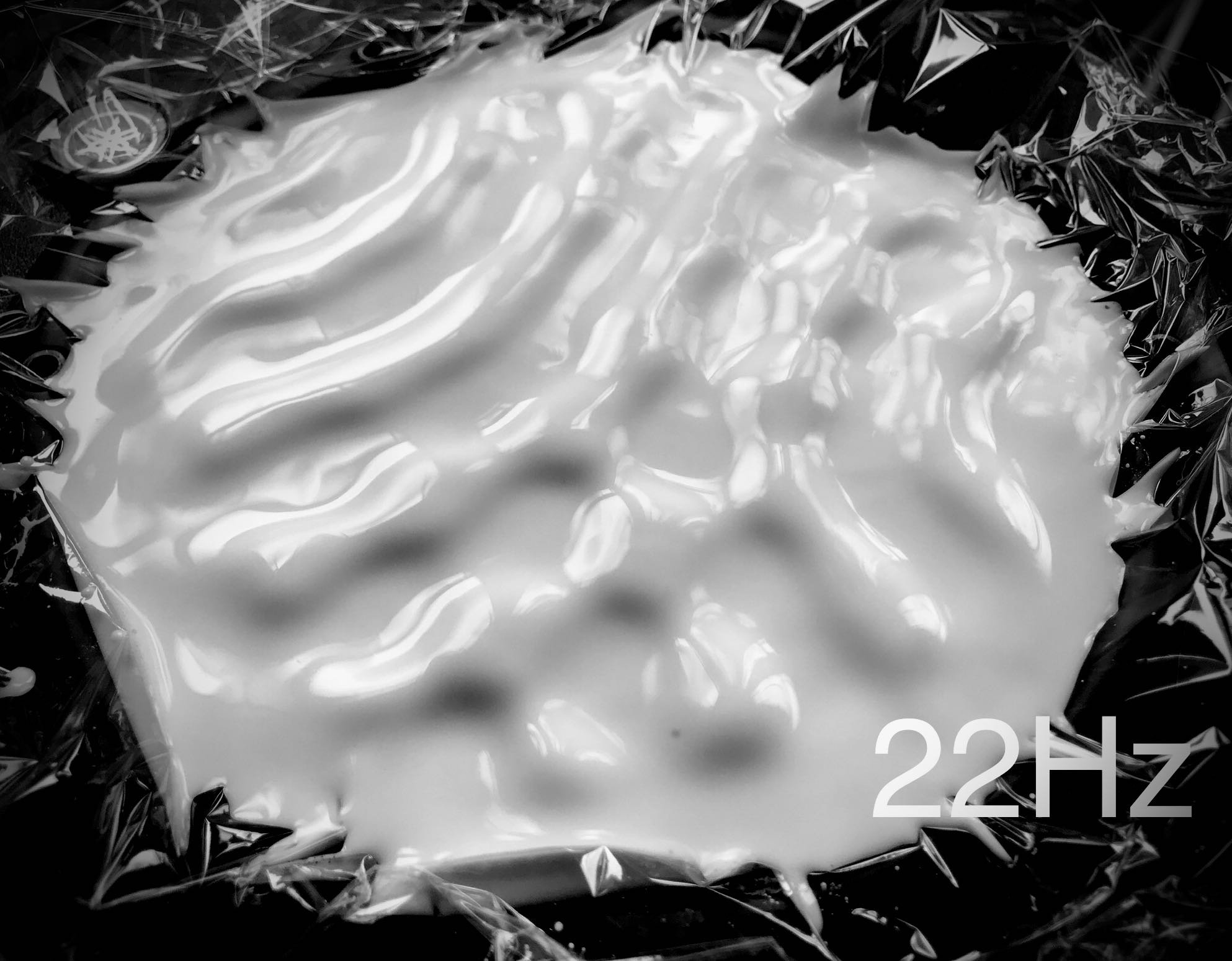
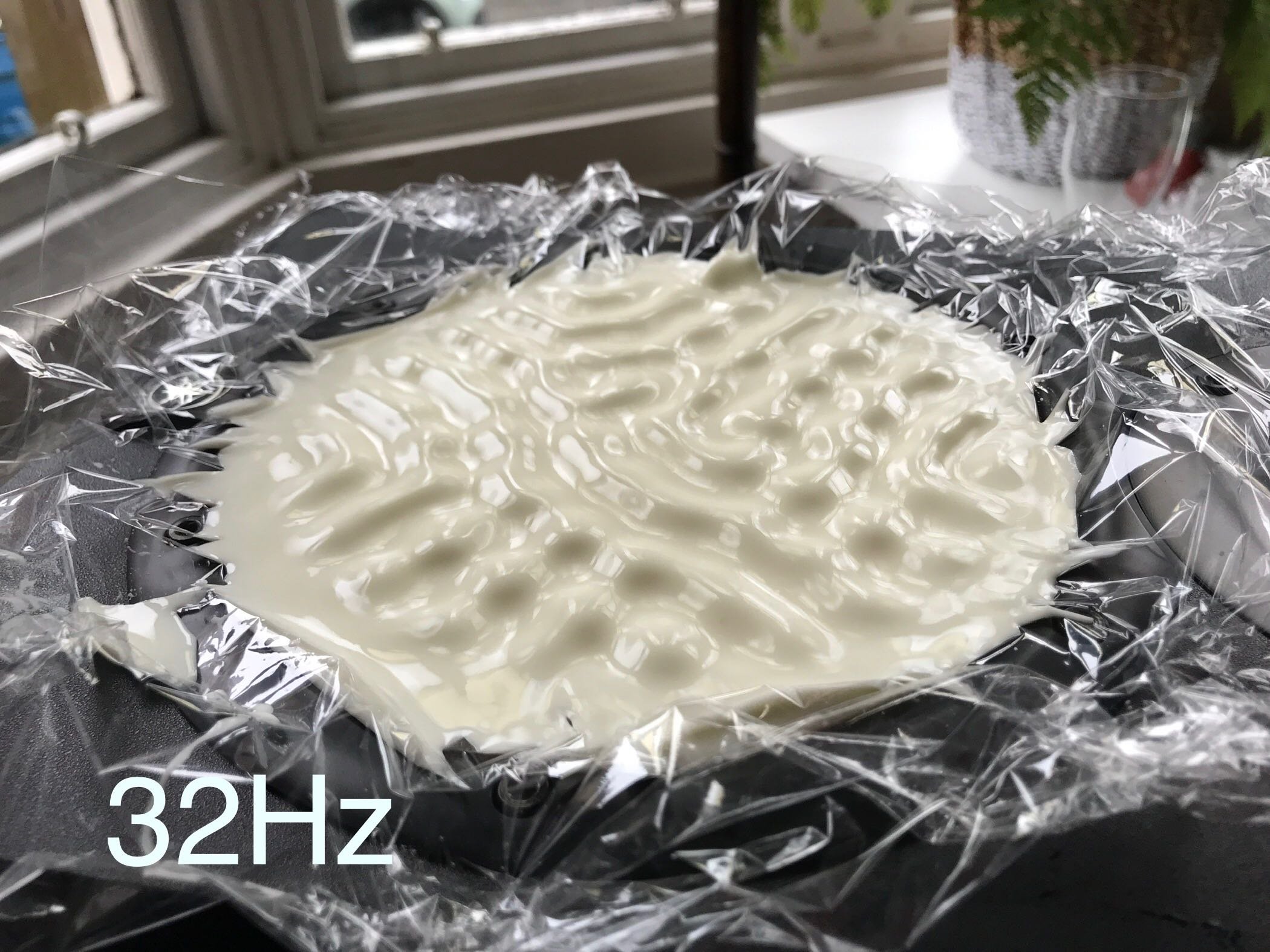
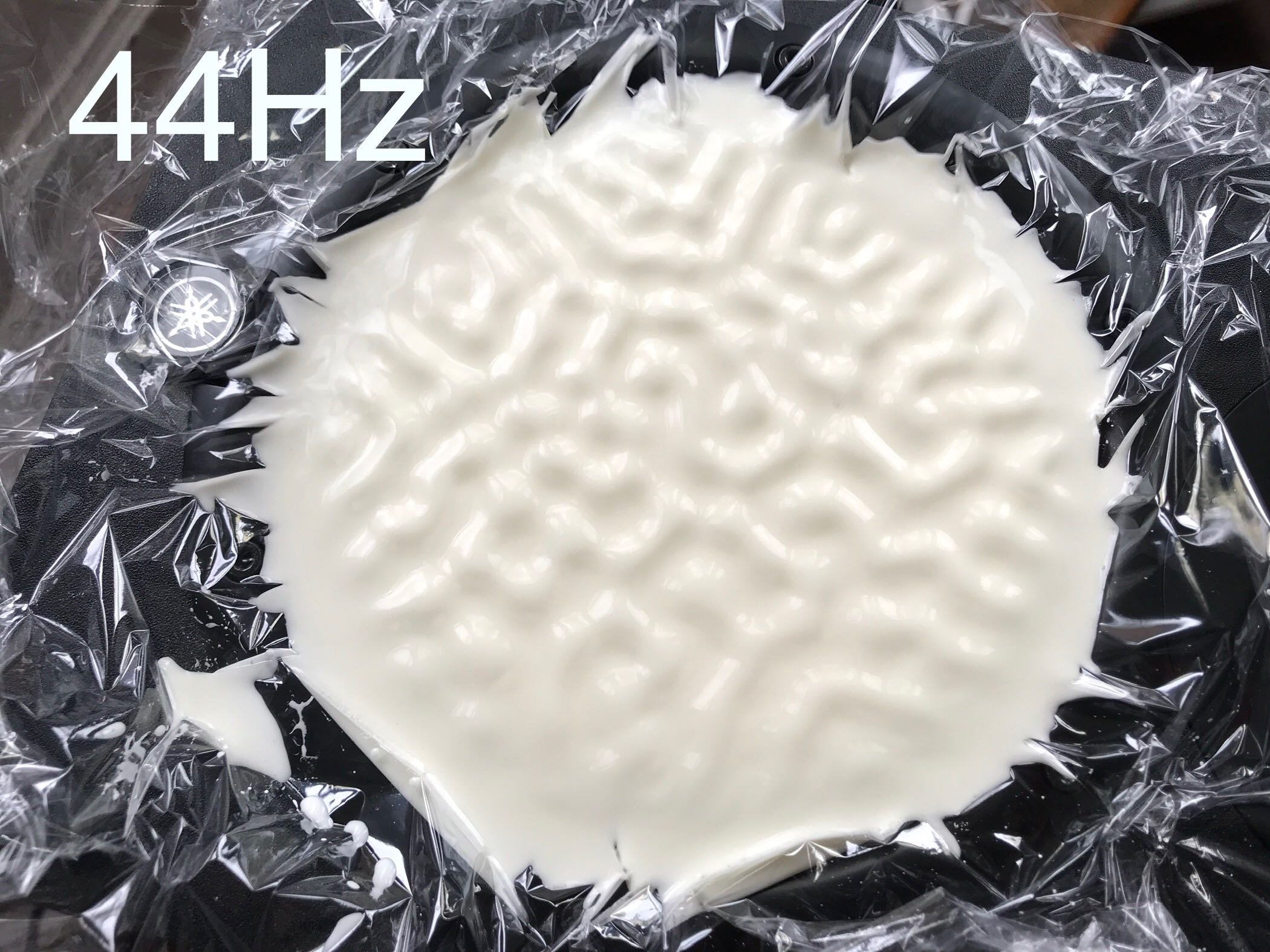
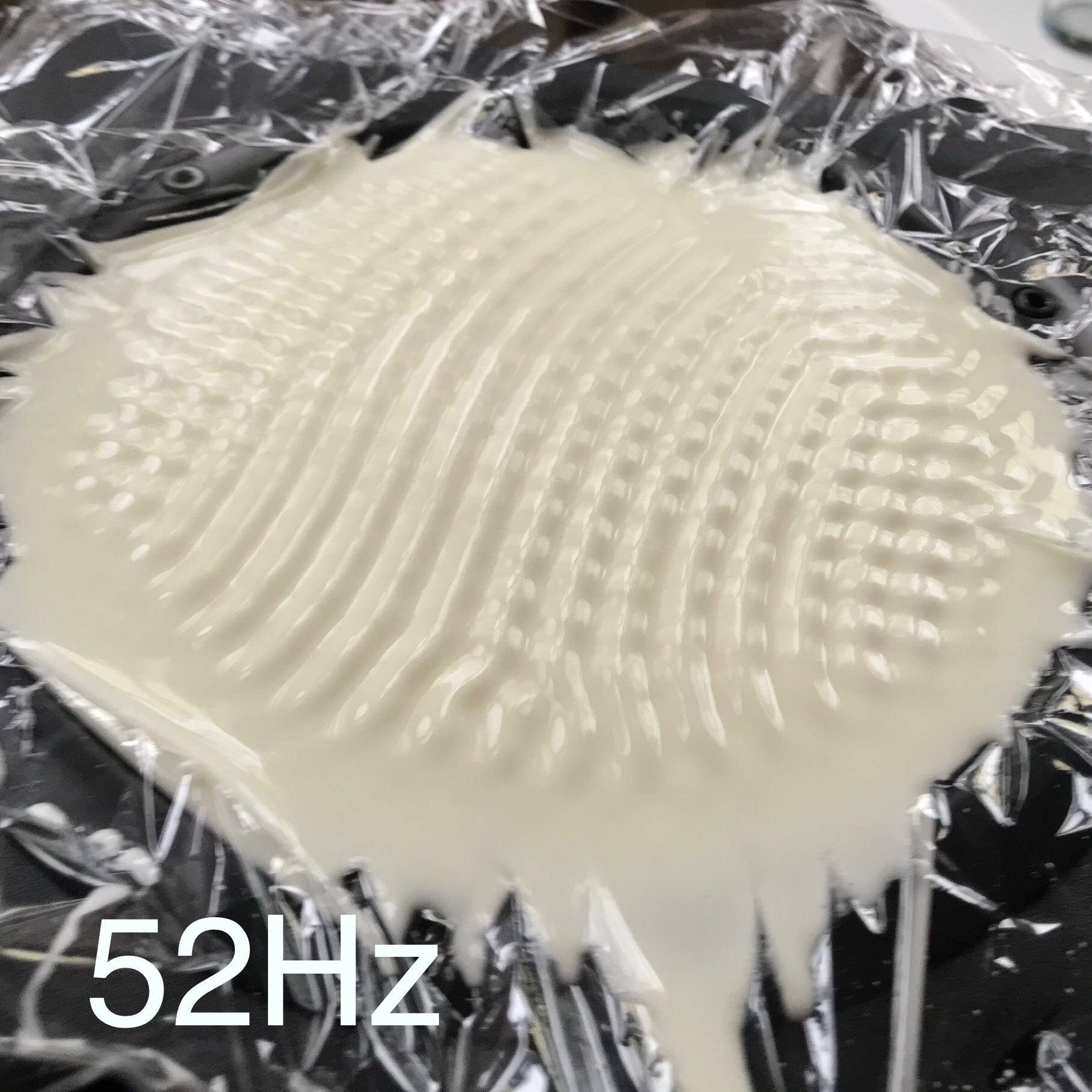
Oobleck in speaker well responding to continuous sine wave at 44Hz
laser pen visualiser




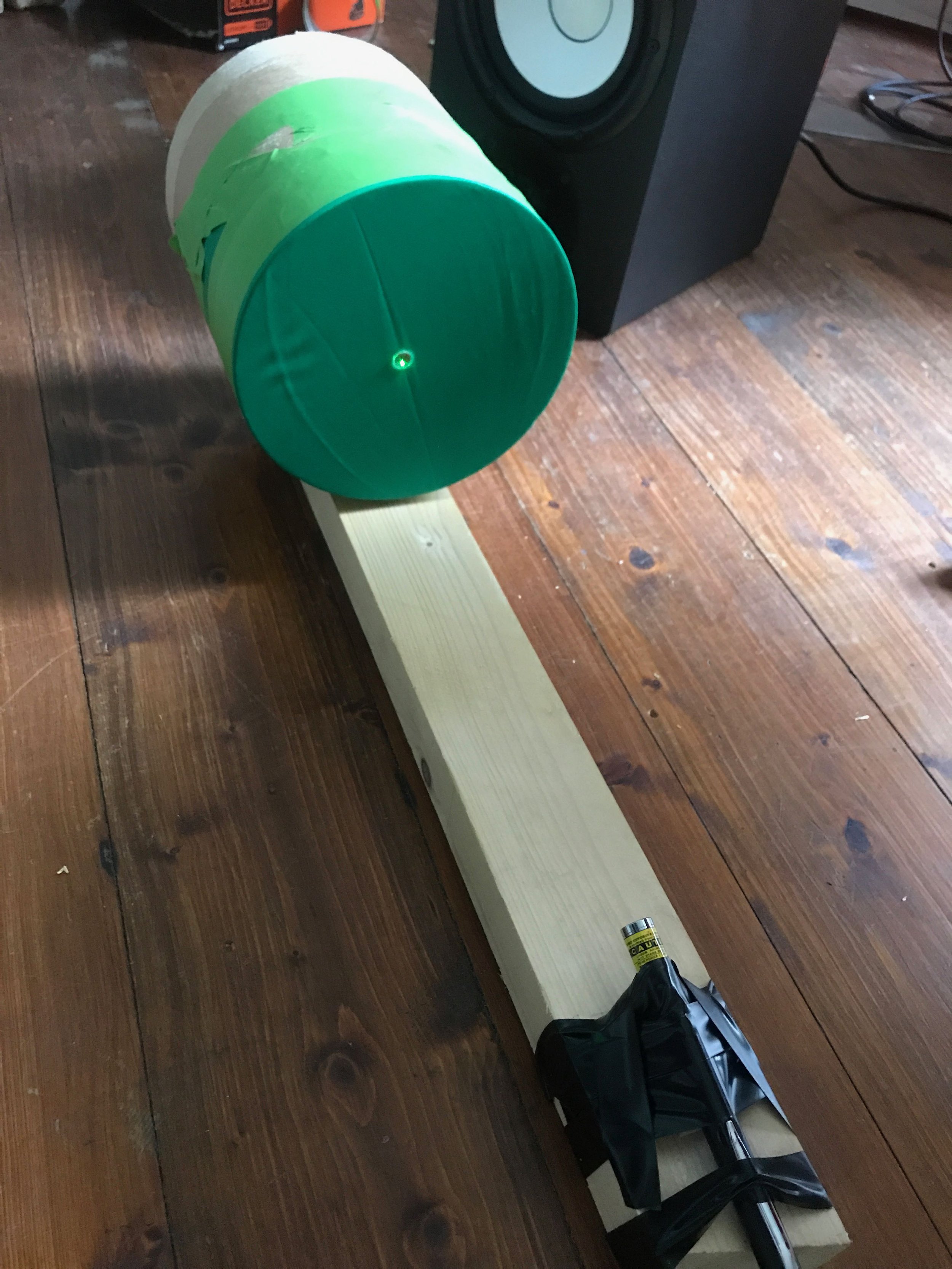
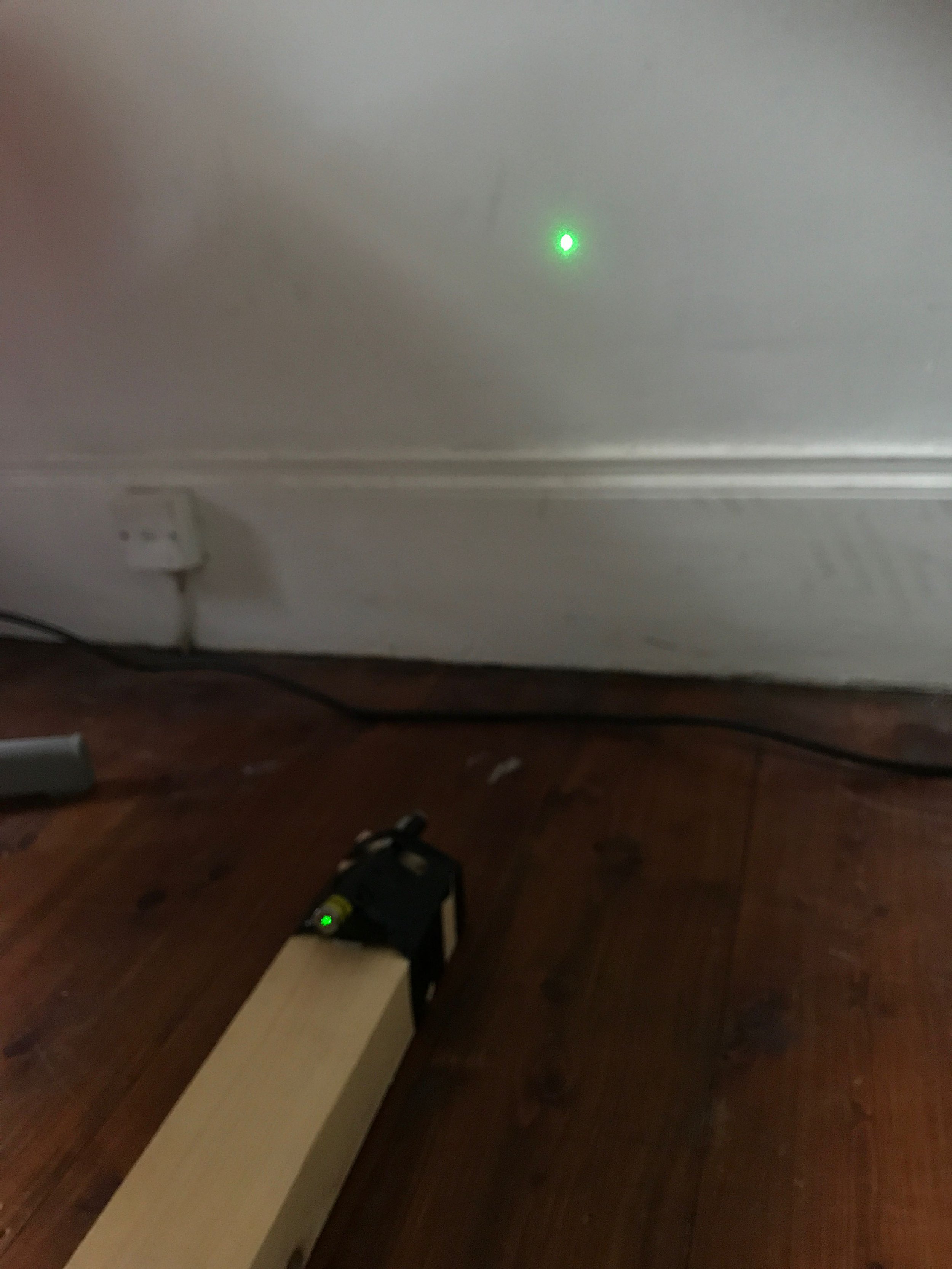
This and similar techniques for making a laser pen sound visualiser can be easily found on YouTube. I used https://youtu.be/eskZ3OORfYM?si=0yzziS1xKBZ0VlXG for this and tips for making a simple chladni plate. A large thick balloon, a mirror tile, and postal tube were put together with an angled laser pen to create a vibrating source of reflected light that could be projected on the wall of a darkened room.
These visualisations are made by my home made laser pen device”” shining on a while wall in a darkened room. These images are a series of stills. The first five are responding to the playing of blue whale calls I reprocessed from the Watkins archive and the last four are responding to the clicks of a sperm whale coda (see research blog post ‘Immersions: week nine’ for details of these recordings.)
My home made sonic visualiser responds to the soundtrack of sperm whale codas (clan based rhythmic codes used in social vocalising)
Post production
I really like this short clip. The ‘squiggle’ is the laser drawing a line in response to the blue whale sounds.
I was experimenting with inverting green screen. Rather than creating a traditional green ‘screen’ on my wall, since I had a green laser pen, I wanted to isolate the green light as the ‘screen’ and invert it to create a transparent layer through which to see the layer of video footage beneath (underwater GoPro footage I took from a speeding research boat in the Eastern Atlantic). I wasn’t sure what I wanted the colour of the laser to be, but I wanted to see what it looked like superimposed over the rushing water.
Part of the greenscreen (or chromakey) process in Adobe After Effects involves creating an in-between layer of solid colour as a stand-in for the target background. I chose a black background solid fill for this interim layer. I wasn’t sure if it was important but I guessed if it showed through at all, it would go well with the deep blue of my target footage. However, being very inexpert with greenscreen in AfterEffects, I accidentally selected the solid fill layer instead of the main footage. The main footage stilll came through, but only in the parts of my ‘greenscreen’ footage that were overspill around the main intense green. This led to an atmospheric iris effect, along with a feel of an animated drawn line. This is infinitely more poetic and satisfying ot me than the more straightforward digital effect I was trying to achieve. It speaks of depth; obscurity; elusiveness; partial view. Exactly in keeping with my research about marine megafauna.
A slightly more straightforward version of the above chromakey experiment - this time using the blue oobleck to create an inverted transparent mask through which to frame the underwater images.
Chladni Patterns
A side experiment - cheap and colourful Chladni. Sand patterns created by placing a small speaker under the balloon-covered tube. I also made an even simpler version by scattering sand on the plastic lid of the postal tuble.
Week two
52 blues
What will happen if I replace the black solid fill in the after effects project above (with the laser pen squiggle of blue whale calls against undewater surf) with fill made from 52 shades of sea blue?
First I selected 52 of the most suitable blues from my valspar collection of about 150 (not too light, not too green, purple or grey). Then I looked them up online and screenshot them. I then imported them into Premier Pro and added dissolve transitions (see below). The next step will be to screen out the titles in After Effects and see whate happens when I use them as a fill layer. I am guessing I I will have to play with the opacity of the layer in over to achieve a sea-like effect. A solid colour will look very artificial.
sonographs
Notes on not being able to film what my eye sees.
I perceive an unbroken line, the camera decodes a syllabary: a series of granular graphemes. Phonemes adrift from context in splashes of time. I speculate on a language of watery vibration, experienced as full-bodied medium and message in one.
I think it’s because of not being able to go over 50fps - because when I tried it at 24fps it was worse. I will try with go pro at 60 though not sure I’ll be able to keep dark exposure.
But I like not knowing. Not mastering my equipment because it makes things happen. I wouldn’t have throught of the whale syllabary without these broken shapes appearing. There’s a lot to play with here. Maybe this is a photographic and print project… Also I would love to commission some neon in these patterns.
Udate: 18th April - have tried multiple frame rates and cameras - up to 240fps. The faster the framerate the worse the clipping - it’s to do with the time the camera takes to change frames I think. There’s a moment when no new light can register as the previous frame is being stored I guess…. There’s a partial explanation here https://youtu.be/C-V1uXeyGmg?si=I0AePLUpErrIBgVR Steve Mould’s excellent YouTube Channel about general interest science.
Update UPDATE later same day: NO! That’s not quite the case either because 60 fps is better than 30 or 24/25 it seems… perhaps to do with the way the footage gets compressed at some point, or else just how it plays on the monitor? Or could just be that there is some kind of flicker after all in the laser pen that syncs best with 60fps. The 60fps Go Pro footage plays great in Premier Pro, so I’ll try exporting and see what happens…
I’m thinking of a narration that follows the laser pen animation - very plain to begin with and then animating as my narration (maybe musical/ composition/ poetry - see ref. We are all compost for inspiration.) speculates. Find the reference which talks about sonograms/language as spatial code? Was there something in new scientist or did I make this up. Either way I saw it first in the loops - likening it in my head to the way a bee dances it’s directions. Maybe the essay could reference this visually or sonically? One to abstract I think rather than try to film bees…
If I could identify types of pattern or shape I could speculate on code cracking. In fact their are AI projects in the works for decoding this kind of thing.
Sound
…is attached to space-time in a way that is very perceptible to humans. We occupy a very compatible temporal scale, in that it’s easy for us to detect the way sound moves. Light, conversely, moves as such a speed as to appear only there, or not there to humans. Whereas we can experience sound passing through, durationally as a lingering caress in itself, it is the information that is carried by light, and what it tells us about the world against which it is reflected that we notice most.
Silent Whale Letters - the bit about being able to hear from the inside of your pal what they had for breakfast…. love it.
So, the sonographs begin to look like the kind of movements a fishy creature might describe - swirls and eddies. This is in keeping with my thesis that sound is everything to do with movement and vice versa
NOTE FOR PHD IN GENERAL - This thesis will tell a story about sound through four speculative artworks. This written thesis will be contextualised through existing knowledges, but it is a speculation in itself which seeks to position the research as an exploration of Donna Harraway and Vientiane Despret call the phonocene; the world according to sound. Moreover, this research explores sound as material phenomenon that exists in special relationship with biological time, connecting this with the ongoing perpetual motion of the universe.
This story, from 1894 which (according to Patrick Feaster https://griffonagedotcom.wordpress.com/2014/09/04/the-fishy-phonograph-of-professor-kollicher/ Accessed 16 April 2024) appeared on the front page of the second section of the Saturday issue of the New York Evening Post on December 22, 1894. It’s a bit of steampunk style semi-sci-fi throwback that inspires something in me - not sure yet what. It reminds me of my short story Howl. This kind of fictioning even form some layer of the soundtrack for Air and Water and Flesh and Earth… It definitely speaks to decoding fish language. Although I’m tempted to research what is being done with AI on this front in real life science (see https://www.bbc.com/future/article/20240409-the-scientists-learning-to-speak-whale#:~:text=More%20than%205%2C000%20miles%20(8%2C000,to%20decipher%20sperm%20whale%20conversation.), it’s a bit of a red herring for me because what I’m interested in speculating on is what a whale might want to say or hear. What its world, and the way sound travels through it might mean to someone who isn’t human and has a different way of perceiving.
Rachel Carson - Under the Sea Wind
Rachel Carson was a hugely influential nature writer in the 60’s best known for her book Silent Spring that documented the harmful use of pesticides. This is her earlier book that adopts various more-than-human subject positions (here, a gull, Rynchops) to help make her point accessible to audiences.
Lighting effects and frame blending in Premier Pro
Having resigned myself to a broken line - it’s OK that the camera and I see things differently after all…. I wanted to create some footage I could overlay or chromakey with underwater images. In the meantime I got hooked on the possiblities of animating lighting efffects to make the line more broken and changeable. Impossibly long render times on my ten year old MacBook Pro mean now is the time to bite the bullet and invest in a new one. I knew I would have to do that soon since more and more things are becoming difficult on my old computer, but since I’ve booked a few days at Cove Park to kick off the process properly, I may as well have it before then. You can’t work with video if your computer can’t work with video….
In the first video clip below, frame sampling is used to fill in the gaps left by slowing down the video. It’s very slightly staccato but not really much more than the original footage which (as discussed above) does not appear smooth as it does to the eye. In the second, optical frame blending was used, which gives the software’s best guess at what the filler frame should be. I really like this effect because it creates some really strange attentuated lines and degraded shapes. It’s more atmospheric than the clearer images. I can already see how this will help (alongside lighting animation) to create a structure and changes in rhythm for the piece in ways that either create a narrative, or complement a spoken or composed soundtrack.
Slowed to 50% speed (frame sampled)
Slowed to 50% seed (optical blending)










